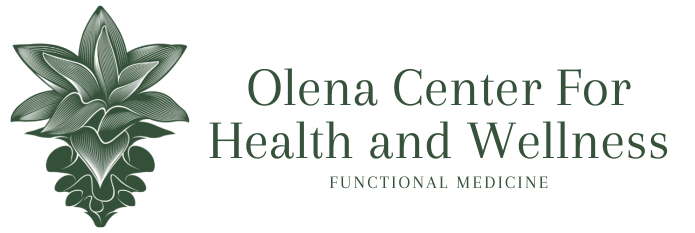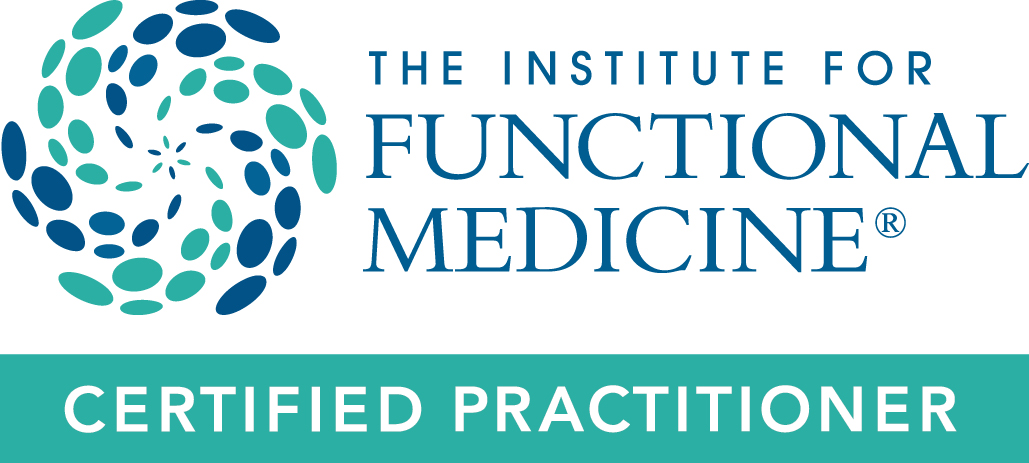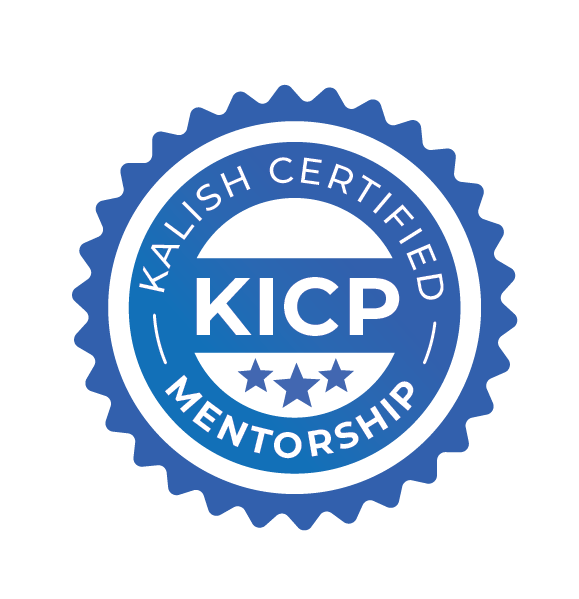**Disclaimer: I am not affiliated with any of the products mentioned in this blog. These are just a few of the many commercially available products on the market that I have either used or researched. Other products may be equally effective, and I do not guarantee the effectiveness of any of these devices.
I am a total sucker when a product promises to make me look ten years younger or make me beautiful… My usual M.O. is to buy now and ask questions later! When red light therapy devices started appearing on the market, I jumped on the bandwagon without thinking twice. In this day and age of marketing, though, it is hard to know whether many products do what they claim. Some products like retinol are tried and true, with tons of research behind them. But what about red light? Is it real, or is it hype?
Red and near-infrared light therapy is also known as low-level light therapy (LLLT) or photobiomodulation (PBM). For simplicity, I will be referring to red-light therapy as PBM. PBM has been investigated for over 60 years by organizations, including NASA and the US military. Since then, thousands of light therapy trials have been conducted on various conditions. PBM has been touted to help with wrinkles and collagen production but also aid in muscle recovery, joint inflammation, blood flow, and cognitive problems, to name a few. You can get these treatments in a medical setting or purchase devices for use at home. Depending on the type of device you get, the price can range from $30 to $600, although full saunas and neurological devices will run in the thousands.
But the question is, does it work?
Short answer — Yes!
Long answer — Yes, but…
1. Home devices may not be as effective as in-office treatments.
Red Light therapy can be delivered via lasers or light-emitting diodes (LED). Lasers are more potent, penetrate deeper, and allow shorter treatment sessions. As a result, lasers are more effective but are generally reserved for medical-grade devices, with some exceptions, such as products for hair regrowth. LEDs are less powerful and require longer treatment sessions, and as a result, may not be as effective as receiving a medical-grade treatment. However, they are infinitely safer, so they are generally what you will find in most commercially available products. However, regular and consistent use of home devices can still provide benefits.
2. More research is still needed.
Getting the correct dose of red light is like finding the right amount of porridge for Goldilocks — you don’t want too little, or the therapy will not be effective, and you don’t want too much, or the treatment may also not be effective or can even be harmful. This concern of “too much” generally refers to the lasers rather than the lower energy LEDs, although misuse of at-home LED devices can theoretically also cause issues. Further research will help finetune the optimal treatment regimens, and the proper use of devices will help prevent harm.
So then is red light therapy safe?
Short answer — Yes!
Long answer — Yes, if used properly. Over the thousands of studies examining red light therapy, PBM appears safe and is not associated with side effects if used as directed (1). It is not invasive and does not contain UV light. Even amongst cancer patients, red-light therapy appears safe and although its use is still controversial, red-light is being invested as an adjunctive treatment in cancer (2–3).
But remember Goldilocks? The concern here is if you get too much light energy, you can cause tissue damage. Again, this risk is primarily related to the more powerful lasers, not lower-energy LED devices. However, as with any treatment, here are some good guidelines:
- If you are getting in-office treatments, see someone qualified.
- With at-home devices, follow the manufacturer’s guide on how often and how long to use the device. Overuse can theoretically lead to tissue injury.
- Pay attention to any manufacturer warnings. Some devices warn against using these devices over implants, as it may overheat the implant.
How does it work?
In short, exposure to red light enhances our cells’ ability to produce energy. This energy can then be used for tissue repair and healing.
Much of what is known about PBM comes from Dr. Michael Hamblin’s research (4–6). He is a Principal Investigator at Wellman Center for Photomedicine, Massachusetts General Hospital, and an Associate Professor at Harvard Medical School. Pretty impressive!
Grossly oversimplifying Dr. Hamblin’s work, you can think of red light acting on our cells the same way sunlight works on plants. In plants, chromophores (i.e., chlorophyll) absorb light, transforming it into energy for the plant. In animals, red and near-infrared light energy is absorbed by chromophores (i.e., cytochrome c oxidase (CCO)) located in a part of our cells called the mitochondria. The mitochondria are the engines of the cells and make all our energy, called ATP. The ATP generated then fuels other cellular processes, including repair.

In addition to creating energy, red and near-infrared light activate other transcription and signaling pathways, turning genes on/off and further aiding in tissue repair and immune support.
What can you use PBM for?
- Hair growth. Red light was first discovered to grow hair on mice exposed to red light. Thank you, mice! Since then, it has been shown to help with hair regrowth in certain types of hair loss, such as male and female pattern hair loss (7–9).
In the pursuit of research (eh hem, more likely vanity), I have conducted my N=1 experiment. I noticed that my hair part was getting broader and more noticeably bald! When the plant-based hair tonics didn’t work, I panicked and became more aggressive. When I say more aggressive, I didn’t just start using ONE modality — I used two — more the merrier, right? I started incorporating a hair supplement, Nutrafol, and a red-light therapy cap, Capillus. As you can see below, at 12 weeks, my part was noticeably less wide, and my hair was fuller at the roots. As these results are after two interventions, I cannot say the same results would have been achieved with PBM alone. However, I am happy and will continue my hair journey (I will keep you posted for later results).

Some caveats for hair growth.
- You want to ensure you have the correct hair pattern amenable to red light therapy. Red light can help existing hair roots grow. It will not grow hair where there previously was none, and it will not grow hair in areas devoid of hair for years. Hence, it may not work for you if you are already bald. Some good brands to try are Capillus or iRestore; both are FDA-approved, and their website has information to determine if you would be a good candidate.
- Laser vs. LED. As lasers penetrate deeper, they may stimulate the hair follicle better. However, LED has also been shown to be effective and is generally less expensive than lasers, although it requires longer session times.
- Consistency is key. You want consistency with treatment and give it at least 12–24 weeks. For those of you who are impatient like me, unfortunately, PBM stimulates the hair to grow but does not make it grow any faster; on average, hair grows slowly at only 0.5 inches per month. A great way to track your changes is to take before and after photos!
- Skin rejuvenation: wrinkles and collagen. PBM has been shown to stimulate collagen growth and to be safe, as the red light is not within the UV spectrum, which causes skin damage (10–14). Home treatment devices will not be as powerful as devices you may receive in a medical office, but if used consistently, home treatments can have benefits.
I have used a red-light face mask on and off since they first came out. In my elaborate attempt to appear younger, I use a variety of skin treatments, so I can’t give you a before and after assessment here. My inner optimist likes to believe it has helped =).
Many great facial brands, including Omlilux, Dr. Dennis Gross, LightStim, etc., are FDA-approved and have shown benefits.
A caveat with using PBM is that it can stimulate melanocytes, those cells that produce the dark pigment melanin. This can potentially worsen conditions like melasma, and you will want to check with your dermatologist if you have pigmentation concerns. On the other hand, it can help if you have vitiligo, a condition in which you have lost pigmentation in the skin.
2. Muscle recovery and performance. Good data shows PBM therapy can improve muscle performance and post-exercise recovery (15–18). It even works for older individuals — it’s never too late!
Muscle performance can be enhanced when PBM is used before exercise, and muscle recovery is enhanced when PBM is used before or after.
I find using infrared therapy after workouts helps reduce muscle soreness, which I usually get a day or two after heavy exercise. There are many different red-light panels or infrared blankets on the market, which can make this more affordable than some full-body saunas. Joovv is a great brand that is medical grade. Lifepro is an affordable option, and most of its devices are FDA-approved.
3. Wound healing. Research has demonstrated improved wound healing and keloid scars (19). If you want to try this, discuss it with your healthcare provider and note that these devices do not replace standard wound care treatment, such as antibiotics and debridement.
4. Arthritis, joint issues. Studies have shown the benefit of PBM with osteoarthritis, but perhaps not as much with other inflammatory arthritides, such as rheumatoid arthritis (20–22). I believe these are great devices to try for any muscle or joint pain — these devices are non-invasive, have a low price point, and do not involve taking a medication that may have potential side effects. Consistency is critical as the effects are subtle, and you must follow the manufacturer’s instructions to avoid injury.
5. Neuroprotection and Cognitive function. The research here is still evolving, but it seems to be a promising adjunct to treating neurologic conditions such as dementia, traumatic brain injury, depression and anxiety, and headaches (23–28). One interesting brand is Vielight. This company produces devices specifically aimed toward cognitive treatment and has teamed up with researchers from Harvard and Boston University for some of their studies. I have not personally needed or tried these devices, but you can look at their website for more information on their research.
Overall, given its safety profile and relatively low cost, I believe red-light therapy can be a beneficial adjunct to beauty regimens, hair loss, and other medical conditions, as above. Please ask your healthcare provider if medical reasons preclude you from using red-light therapy.
Want to learn more? Here are some resources I have found:
Amazon.com: Michael R. Hamblin: books, biography, latest update Dive in and learn the nitty gritty of photobiomodulation from the expert!
Therapeutic Beams: Reliable Red Light Therapy Reviews, Guides, and TipsGreat general layperson guide.
Best Red Light Therapy — Find the Right Light The author is not a healthcare provider or formal researcher, but she has scoured the literature and sums up much of the research behind red light.
REFERENCES:
- Glass GE. Photobiomodulation: A Systematic Review of the Oncologic Safety of Low-Level Light Therapy for Aesthetic Skin Rejuvenation. Aesthet Surg J. 2023 Apr 10;43(5): NP357-NP371. doi: 10.1093/asj/sjad018. PMID: 36722207; PMCID: PMC10309024.
- Bensadoun RJ, Epstein JB, Nair RG, Barasch A, Raber-Durlacher JE, Migliorati C, Genot-Klastersky MT, Treister N, Arany P, Lodewijckx J, Robijns J; World Association for Laser Therapy (WALT). Safety and efficacy of photobiomodulation therapy in oncology: A systematic review. Cancer Med. 2020 Nov;9(22):8279–8300. doi: 10.1002/cam4.3582. Epub 2020 Oct 26. PMID: 33107198; PMCID: PMC7666741.
- de Pauli Paglioni M, Araújo ALD, Arboleda LPA, Palmier NR, Fonsêca JM, Gomes-Silva W, Madrid-Troconis CC, Silveira FM, Martins MD, Faria KM, Ribeiro ACP, Brandão TB, Lopes MA, Leme AFP, Migliorati CA, Santos-Silva AR. Tumor safety and side effects of photobiomodulation therapy used for prevention and management of cancer treatment toxicities. A systematic review. Oral Oncol. 2019 Jun;93:21–28. doi: 10.1016/j.oraloncology.2019.04.004. Epub 2019 Apr 10. PMID: 31109692.
- Hamblin MR. Photobiomodulation or low-level laser therapy. J Biophotonics. 2016 Dec;9(11–12):1122–1124. doi: 10.1002/jbio.201670113. PMID: 27973730; PMCID: PMC5215795.
- Hamblin MR. Mechanisms and applications of the anti-inflammatory effects of photobiomodulation. AIMS Biophys. 2017;4(3):337–361. doi: 10.3934/biophy.2017.3.337. Epub 2017 May 19. PMID: 28748217; PMCID: PMC5523874.
- Hamblin MR. Mechanisms and Mitochondrial Redox Signaling in Photobiomodulation. Photochem Photobiol. 2018 Mar;94(2):199–212. doi: 10.1111/php.12864. Epub 2018 Jan 19. PMID: 29164625; PMCID: PMC5844808.
- Avci P, Gupta GK, Clark J, Wikonkal N, Hamblin MR. Low-level laser (light) therapy (LLLT) for hair loss treatment. Lasers Surg Med. 2014 Feb;46(2):144–51. doi: 10.1002/lsm.22170. Epub 2013 Aug 23. PMID: 23970445; PMCID: PMC3944668.
- Adil A, Godwin M. The effectiveness of treatments for androgenetic alopecia: A systematic review and meta-analysis. J Am Acad Dermatol. 2017 Jul;77(1):136–141.e5. doi: 10.1016/j.jaad.2017.02.054. Epub 2017 Apr 7. PMID: 28396101.
- Zarei M, Wikramanayake TC, Falto-Aizpurua L, Schachner LA, Jimenez JJ. Low-level laser therapy and hair regrowth: an evidence-based review. Lasers Med Sci. 2016 Feb;31(2):363–71. doi: 10.1007/s10103–015–1818–2. Epub 2015 Dec 21. PMID: 26690359.
- Mota LR, Duarte IDS, Galache TR, Pretti KMDS, Neto OC, Motta LJ, Horliana ACRT, Silva DFTD, Pavani C. Photobiomodulation Reduces Periocular Wrinkle Volume by 30%: A Randomized Controlled Trial. Photobiomodul Photomed Laser Surg. 2023 Feb;41(2):48–56. doi: 10.1089/photob.2022.0114. PMID: 36780572.
- Ablon G. Phototherapy with Light Emitting Diodes: Treating a Broad Range of Medical and Aesthetic Conditions in Dermatology. J Clin Aesthet Dermatol. 2018 Feb;11(2):21–27. Epub 2018 Feb 1. PMID: 29552272; PMCID: PMC5843358.
- Jagdeo J, Nguyen JK, Ho D, Wang EB, Austin E, Mamalis A, Kaur R, Kraeva E, Schulman JM, Li CS, Hwang ST, Wun T, Maverakis E, Isseroff RR. Safety of light emitting diode-red light on human skin: Two randomized controlled trials. J Biophotonics. 2020 Mar;13(3):e201960014. doi: 10.1002/jbio.201960014. Epub 2019 Dec 8. PMID: 31483941; PMCID: PMC8887049.
- Lee SY, Park KH, Choi JW, Kwon JK, Lee DR, Shin MS, Lee JS, You CE, Park MY. A prospective, randomized, placebo-controlled, double-blinded, and split-face clinical study on LED phototherapy for skin rejuvenation: clinical, profilometric, histologic, ultrastructural, and biochemical evaluations and comparison of three different treatment settings. J Photochem Photobiol B. 2007 Jul 27;88(1):51–67. doi 10.1016/j.jphotobiol.2007.04.008. Epub 2007 May 1. PMID: 17566756.
- Avci P, Gupta A, Sadasivam M, Vecchio D, Pam Z, Pam N, Hamblin MR. Low-level laser (light) therapy (LLLT) in skin: stimulating, healing, restoring. Semin Cutan Med Surg. 2013 Mar;32(1):41–52. PMID: 24049929; PMCID: PMC4126803.
- Vanin AA, Verhagen E, Barboza SD, Costa LOP, Leal-Junior ECP. Photobiomodulation therapy for the improvement of muscular performance and reduction of muscular fatigue associated with exercise in healthy people: a systematic review and meta-analysis. Lasers Med Sci. 2018 Jan;33(1):181–214. doi: 10.1007/s10103–017–2368–6. Epub 2017 Oct 31. PMID: 29090398.
- Toma RL, Vassão PG, Assis L, Antunes HK, Renno AC. Low-level laser therapy associated with a strength training program on muscle performance in elderly women: a randomized double-blind control study. Lasers Med Sci. 2016 Aug;31(6):1219–29. doi: 10.1007/s10103–016–1967-y. Epub 2016 Jun 1. PMID: 27250715.
- Leal-Junior EC, Vanin AA, Miranda EF, de Carvalho Pde T, Dal Corso S, Bjordal JM. Effect of phototherapy (low-level laser therapy and light-emitting diode therapy) on exercise performance and markers of exercise recovery: a systematic review with meta-analysis. Lasers Med Sci. 2015 Feb;30(2):925–39. doi: 10.1007/s10103–013–1465–4. Epub 2013 Nov 19. PMID: 24249354.
- Antonialli FC, De Marchi T, Tomazoni SS, Vanin AA, dos Santos Grandinetti V, de Paiva PR, Pinto HD, Miranda EF, de Tarso Camillo de Carvalho P, Leal-Junior EC. Phototherapy in skeletal muscle performance and recovery after exercise: effect of combination of super-pulsed laser and light-emitting diodes. Lasers Med Sci. 2014 Nov;29(6):1967–76. doi: 10.1007/s10103–014–1611–7. Epub 2014 Jun 19. PMID: 24942380.
- Machado RS, Viana S, Sbruzzi G. Low-level laser therapy in the treatment of pressure ulcers: systematic review. Lasers Med Sci. 2017 May;32(4):937–944. doi: 10.1007/s10103–017–2150–9. Epub 2017 Jan 23. PMID: 28116536.
- Stausholm MB, Naterstad IF, Joensen J, Lopes-Martins RÁB, Sæbø H, Lund H, Fersum KV, Bjordal JM. Efficacy of low-level laser therapy on pain and disability in knee osteoarthritis: systematic review and meta-analysis of randomised placebo-controlled trials. BMJ Open. 2019 Oct 28;9(10):e031142. doi: 10.1136/bmjopen-2019–031142. PMID: 31662383; PMCID: PMC6830679.
- Ahmad MA, A Hamid MS, Yusof A. Effects of low-level and high-intensity laser therapy as adjunctive to rehabilitation exercise on pain, stiffness and function in knee osteoarthritis: a systematic review and meta-analysis. Physiotherapy. 2022 Mar;114:85–95. doi: 10.1016/j.physio.2021.03.011. Epub 2021 Mar 26. PMID: 34654554.
- Lourinho I, Sousa T, Jardim R, Pinto AC, Iosimuta N. Effects of low-level laser therapy in adults with rheumatoid arthritis: A systematic review and meta-analysis of controlled trials. PLoS One. 2023 Sep 8;18(9):e0291345. doi: 10.1371/journal.pone.0291345. PMID: 37683021; PMCID: PMC10490856.
- Salehpour F, Mahmoudi J, Kamari F, Sadigh-Eteghad S, Rasta SH, Hamblin MR. Brain Photobiomodulation Therapy: a Narrative Review. Mol Neurobiol. 2018 Aug;55(8):6601–6636. doi: 10.1007/s12035–017–0852–4. Epub 2018 Jan 11. PMID: 29327206; PMCID: PMC6041198.
- Kheradmand A, Donboli S, Tanjani PT, Farhadinasab A, Tabeie F, Qutbi M, Kordmir T. Therapeutic Effects of Low-Level Laser Therapy on Cognitive Symptoms of Patients with Dementia: A Double-Blinded Randomized Clinical Trial. Photobiomodul Photomed Laser Surg. 2022 Sep;40(9):632–638. doi: 10.1089/photob.2021.0135. PMID: 36126290.
- Poiani GDCR, Zaninotto AL, Carneiro AMC, Zangaro RA, Salgado ASI, Parreira RB, de Andrade AF, Teixeira MJ, Paiva WS. Photobiomodulation using low-level laser therapy (LLLT) for patients with chronic traumatic brain injury: a randomized controlled trial study protocol. Trials. 2018 Jan 8;19(1):17. doi: 10.1186/s13063–017–2414–5. PMID: 29310710; PMCID: PMC5759360.
- Hipskind SG, Grover FL Jr, Fort TR, Helffenstein D, Burke TJ, Quint SA, Bussiere G, Stone M, Hurtado T. Pulsed Transcranial Red/Near-Infrared Light Therapy Using Light-Emitting Diodes Improves Cerebral Blood Flow and Cognitive Function in Veterans with Chronic Traumatic Brain Injury: A Case Series. Photobiomodul Photomed Laser Surg. 2019 Feb;37(2):77–84. doi: 10.1089/photob.2018.4489. PMID: 31050928; PMCID: PMC6390875.
- Salehpour F, Khademi M, Hamblin MR. Photobiomodulation Therapy for Dementia: A Systematic Review of Pre-Clinical and Clinical Studies. J Alzheimers Dis. 2021;83(4):1431–1452. doi: 10.3233/JAD-210029. PMID: 33935090.
- Hennessy M, Hamblin MR. Photobiomodulation and the brain: a new paradigm. J Opt. 2017 Jan;19(1):013003. doi: 10.1088/2040–8986/19/1/013003. Epub 2016 Dec 14. PMID: 28580093; PMCID: PMC5448311.
For more useful information on functional holistic health, you can visit our FREE video library here.
About the Author:
Dr. Eri Shimizu is a board certified in Internal Medicine Doctor and certified through the Institutes of Functional Medicine. She earned a Bachelor of Science in Environmental Bioengineering from the University of Hawaii at Manoa and graduated summa cum laude from Creighton University Medical School. She completed her Internal Medicine residency at UCLA and worked at a Los Angeles county hospital. In 2012, she returned to Hawaii and served as a Hospitalist at Maui Memorial Medical Center. Maui is now home with her husband, two children, and a fighting fish named Rainbow.
Schedule a FREE Functional Medicine Health Consult with Dr. Eri.






